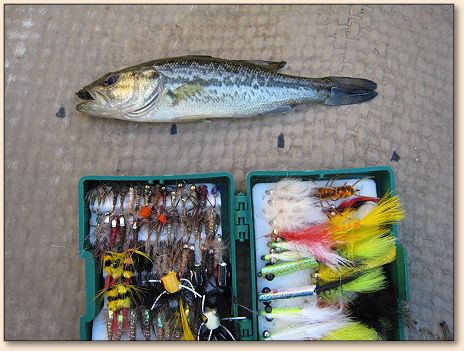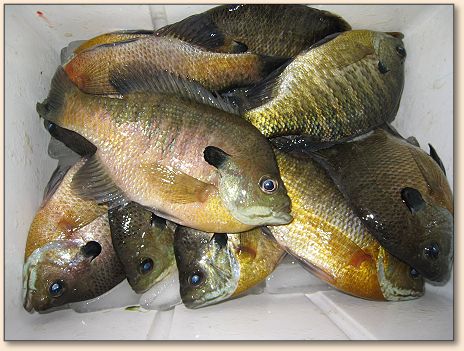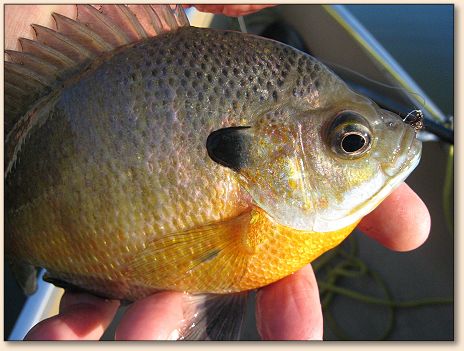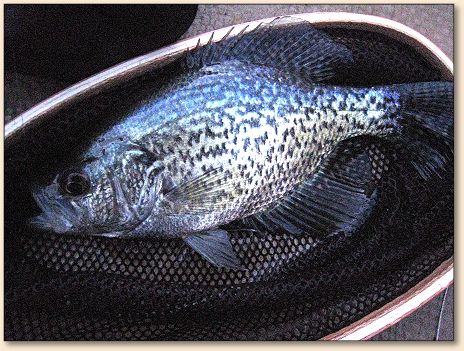|
There's a lot they don't tell you when you buy your
first fly rod. I suppose the retail salespeople
those in the know, anyway don't want the truth
scaring you off.
Well, I'm here to tell anybody who can read that
fly fishing is a sport that can get downright strange.
It's because the fish we attempt to catch with our new
fly tackle so often behave in unpredictable and downright
strange ways. Their behavior compels us to behave
strangely right along with 'em; if we don't, the train
pulls out and we get left at the station.
First-time fly rod buyers aren't strange, then, it's the
fish they intend to go after. You just have to be open
to doing strange and unexpected things with your new fly
tackle, and doing those things at strange times. This is
what the sales people never tell us.
That old stand-up-straight "Mr. Normal" broad daylight
fly fishing you see folks doing on Saturday morning TV
shows and store bought DVDs? I suspect it's just a
portion of the real deal, and anymore I'm questioning
how big a portion it represents. Seems the more about
this sport I learn through experience, the more ignorant
I learn that I was (and still am). But that's no
embarrassment because it's been some time since anybody
accused me of being smart.
After banging your head against the wall of futility enough
times, you learn it's pointless to blame fish for behaving
strangely. Hungry fish searching for food instinctively
behave how they need to, when they need to, in order to
grab and swallow a prey item.
Which leads us to ask: What is the #1 prey item sought most
of the time by hungry fresh water fish? Bugs, that's what
(at least, I think so). Bugs, though, are a prey group
composed of many species and if you look close enough at
each of those species it will exhibit some seriously weird
behavior. Bugs, then, are the real culprits behind why a
fly fishing pilgrim ends up doing bizarre things if not
immediately then eventually. Blame it on bugs; blame it
on flies, all those flies with their strange ways.
There: I feel better now.
It's 3:30 p.m. April 15th when I shove off from the lake shore
in my canoe. Over a quarter of this year is history and today's
outing is my first fishing-from-the-canoe trip this year. Hard
to believe but that's how cold, stormy and windy it's been in
northeast Kansas this spring.
Judging by how the water looks today, this trip could be a lost
cause. It rained hard two days earlier and the lake is still
murky from the runoff inflow. I've seen it murkier; today I
suppose it's only 50% murky, to put a number on it. Making
matters worse, though, is the algae bloom I've been monitoring
for weeks; it has intensified, generating countless floating,
closely-spaced filament algae goop clumps that travel about
the lake surface pushed by wind and water currents.

Still, since this goop tends to accumulate along the
shoreline more than anywhere else it was great being
out on the lake. Better than standing beside it,
that's for sure And today the sky was clear, air temp
in the mid-60s, light wind. I felt like a basking lizard,
all warm and cozy. And because I'd come here planning on
staying out late I was dressed for the occasion. Polypro
sock liners, wool socks, long underwear top and bottom,
this was the base layer uniform of the day. Stowed behind
my paddling saddle inside a nylon stuff bag was a fleece
vest, stocking cap, insulated jacket and fleece fingerless
gloves. With this clear sky and the lake's frigid water,
where I'd be fishing the air temperature would surely drop
fast come sundown.
During previous trips this spring I'd observed surface
feeding that commenced fairly late, around 6:30 or 7:00
p.m., and continued until
well, I really don't know how
long it continued because I always headed home once it
got dark. Always the surface feeding was going strong
as night fell, and the bulk of the feeding action always
happened tantalizingly beyond my shore-bound casting range.
This afternoon with the help of my canoe I would move
about more freely and bide my time with a few hours of
daylight fishing, during which if I caught some fish,
fine; if I didn't, fine. I came here today specifically
to try my luck on the evening feeding action. Around
sundown I would begin watching and listening for a
localized concentration of surface disturbances then
sneak in close, lower my anchors and cast to rising fish
without spraining my wrist and dislocating my shoulder
doing it.
As mentioned above, my intention was to fish casually
until around sundown and during that time if I didn't
catch any fish, fine. Well, that carefree notion got
old fast. I was fishing hotspot after hotspot that I'd
hit last year, places where I could bet the farm that
something would grab Old Reliable. But this afternoon
for three hours I swam Old Reliable through every good
place I could think of and never got a touch.
I was nymphing deep, which seemed the right thing to do
for two reasons: 1) it was broad daylight so no fish
would be inhabiting the water column's top zone due to
fear of aerial predation, and; 2) the water was so cold
the fish would be holding near the bottom. If they were
holding near the bottom they might grab Old Reliable as
a pre-evening appetizer.
But three hours of this deep nymphing strategy brought
not a single hit. When two hours ticked off the clock
my resolve to stay on the water 'til sundown began
weakening. All I'd had to eat today was a late breakfast,
so I was getting hungry. And as my warmly dressed body
began overheating in the sunshine I remembered I'd left
my water bottle back in the truck. All the other fishermen
this afternoon a picnic area shoreline fishing crowd plus
four bass boats these people had all left.
I was now alone with this whole lake arm to myself. An
ideal situation usually, but there I sat hitless and fishless
and on the razor's edge of giving up. I guess you could say
my confidence had been bruised. Fact is I've developed so
much faith in the effectiveness of fly rodding as a
panfish-catching system that nowadays I consciously go
afield with every expectation of enjoying at least modest
success. However, this business of not getting a single
hit in...
Crunch! Something violently grabbed Old Reliable. It
pulled hard as it swam back and forth laterally very
fast, and then it ran out of gas. Quite a little battle
was put up for its size.

Considering the time of day it was now (6:45 p.m.) I
interpreted this baby largemouth's attack as a message
from the lake inhabitants below that I better not go home
just yet. Stick with this enterprise a little longer, see
if something happens.
Confused about what to do next, I remembered that this 5-inch
largemouth had taken Old Reliable near the end of a quicker
retrieve through submerged brush, when my nymph was higher
in the column prior to being lifted out. Which meant
possibly it meant that the fish were now starting to
drift upward into a mid-depth staging zone in anticipation
of tonight's surface action. The time of day and lower sun
angle certainly supported this theory.
But if this was true, I should better my odds of working the
mid zone. So I clipped off Old Reliable (a #10 Hare's Ear
Nymph), stowed him in the box and selected a lighter weight
#14 Pheasant Tail Nymph, one that had been mailed to me a
few weeks earlier by a guy up in Iowa who doesn't wear
glasses but sells a lot of them.
Speaking of this Pheasant Tail Nymph, my choice of it was
not random; no, sir. Two afternoons earlier, I'd used this
nymph while casting off the bank at one of the lake's feeder
creeks and enjoyed the good fortune pictured below:

Twenty-two bluegill fillets are now sitting in my freezer
thanks to this PTN. By the way, the PTN that caught those
eleven 'gills can be seen in the photo with the baby bass.
The nymph in question is sitting second row from the top,
fourth nymph from the left. Take a bow, Mr. PTN.
Okay, back to today's trip...
With this smaller, lighter nymph I began working the submerged
brush anew. It was relaxing business, using the PTN here;
anytime a pause in the retrieve occurred all I had to do was
wait a bit (don't pull back) and soon enough the nymph would
slide free of the submerged branch it had swam up against.
As for how the fish liked it, one of my first customers
was this guy:

Some of the best bluegills I began catching appeared to be
big females, but I wasn't sure. I think they were females;
despite their impressive size they lacked that classic
pumpkin-orange belly the bulls normally display. Their
bellies were fat, making me suspect even more strongly
that they were females full of eggs. Whether females or
just poorly dressed bulls, these 'gills got released back
into the lake.
Around 7:30, maybe 7:45 p.m., I began hearing surface rises.
Spotting an area where some rises were happening, I relocated
within the large stand of submerged brush. The casting isn't
easy here; what brush stalks are still standing retard the
migration of the algae clumps, resulting in a much denser
concentration of algae clumps within the brushy area.
Frustrating casting, and not very productive despite
the presence of feeding fish.
Finally, I began seeing and hearing what I was hoping for:
surface feeding swirls of fish that were out in the center
of the lake arm, in open water. I relocated into a new spot
twenty feet outside the edge of the standing brush, where I
could cast either way, left or right, depending on which
side of the canoe a rise happened.
After about 20 minutes of no hits with swirling fish all
around me it dawned on me that even the lightweight PTN
might be sinking too deep to attract attention. I should
maybe use a fly that is much lighter and thus stay nearer
the surface. But did I have anything with me that would
fit this bill?
Looking west across the water toward the low-angle setting
sun, I saw the silhouette of a panfish that was holding
barely six inches below the surface. Its head was tilted
upward; clearly it was searching for surface prey to ambush.
Suddenly recalling a conversation I had last year with
Cabela's Fly Shop employee Tim Giger, I opened my fly
box hoping I would find an Olive Soft Hackle wet fly
that Tim had talked me into buying that day. Yep, there
it was; maybe I was in business. Okay, here we go with
a traditional wet fly.
In no time at all I was into fish and I mean lots of
fish. Most of which, I'm grieved to report, got off
the hook before I ever saw them. It's painful, having
so many long line releases. Maybe I was too excited
and hauled back on the rod too hard upon detecting
strikes. Or maybe the fish were barely lipping the
Olive Soft Hackle and would never have remained hooked
no matter how gently I fought them. I did, though,
manage to land a few of these escape artists.

This thick bodied 11-inch black crappie grabbed an
Olive Soft Hackle in the center of a big lake arm.
It took a wet fly pattern that was swimming along
no more than six inches below the surface in frigid
cold water, in near-darkness. And this wasn't the only
crappie that grabbed the OSH, either; I was getting
lots of good, solid hits from fish that quickly got
off. But in the short time they were on the hook, I
could tell from their "fight feel" that they were crappies.
It was very exciting action.
When you grow up in a place like Kansas and learn most
of what you know about fishing from the traditional old
school, you feel pretty strange being out on a lake in a
canoe in near-darkness. What's stranger yet is when you
confirm by using your own senses that panfish are aggressive
feeders at such late hours in very cold water.
I grew up thinking of trout as being not the only but
certainly the premier cold water fish. Of course I also
read about cold-water species such as the grayling, salmon,
and steelhead. These are what I consider classic cold-water
fish; we expect them to eat bugs on lake surfaces in bitter
cold water. But panfish? Isn't a panfish's traditional role
to remain down deep and unavailable, to stay hibernated until
the water warms up?
And bugs what's up with these bugs that must be hatching
somewhere near my canoe? There go some of 'em right now,
flying low and dipping onto the surface (laying eggs?), just
zooming around through this chilly night air like it's no big
deal! Hasn't anybody told them this is a lake in Kansas, for
crying out loud, not some ice cold mountain stream in the
Rockies? What are all these bugs doing being out and about
in a cold air/cold water environment in the Midwest at dusk?
Well, doing "bug things," I guess. ~ Joe
About Joe:
 From Douglas County, Kansas, Joe is a former municipal and
federal police officer, now retired. In addition to fishing, he hunts
upland birds and waterfowl, and for the last 15 years
has pursued the sport of solo canoeing. On the nearby
Kansas River he has now logged nearly 5,000 river miles
while doing some 400 wilderness style canoe camping
trips. A musician/singer/songwriter as well, Joe recently
retired from the U.S. General Services Adminstration.
From Douglas County, Kansas, Joe is a former municipal and
federal police officer, now retired. In addition to fishing, he hunts
upland birds and waterfowl, and for the last 15 years
has pursued the sport of solo canoeing. On the nearby
Kansas River he has now logged nearly 5,000 river miles
while doing some 400 wilderness style canoe camping
trips. A musician/singer/songwriter as well, Joe recently
retired from the U.S. General Services Adminstration.
Joe at one time was a freelance photojournalist who wrote the
Sunday Outdoors column for his city newspaper. Outdoor
sports, writing and music have never earned him any money,
but remain priceless activities essential to surviving the
former 'day job.'
|






 From Douglas County, Kansas, Joe is a former municipal and
federal police officer, now retired. In addition to fishing, he hunts
upland birds and waterfowl, and for the last 15 years
has pursued the sport of solo canoeing. On the nearby
Kansas River he has now logged nearly 5,000 river miles
while doing some 400 wilderness style canoe camping
trips. A musician/singer/songwriter as well, Joe recently
retired from the U.S. General Services Adminstration.
From Douglas County, Kansas, Joe is a former municipal and
federal police officer, now retired. In addition to fishing, he hunts
upland birds and waterfowl, and for the last 15 years
has pursued the sport of solo canoeing. On the nearby
Kansas River he has now logged nearly 5,000 river miles
while doing some 400 wilderness style canoe camping
trips. A musician/singer/songwriter as well, Joe recently
retired from the U.S. General Services Adminstration.